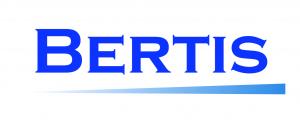Bertis Enables Hanmi's Breakthrough Obesity Drug Mechanism Discovery with Advanced Proteomics Expertise
Bertis' 'PASS' has overcome limitations in skeletal muscle proteome analysis, providing scientific evidence for HM17321's mechanism of action
SOUTH KOREA, October 24, 2025 /EINPresswire.com/ -- Bertis, a proteomics-based precision medicine company (co-CEOs Dong-young Noh and Seung-man Han), announced that its advanced proteomics platform, PASS (Pan-omics Analysis Service & Solution), played a key role in uncovering the molecular mechanism of Hanmi Pharmaceutical's novel obesity drug, HM17321.At the 61st European Association for the Study of Diabetes (EASD 2025), held in Vienna, Austria (September 15-19), Hanmi Pharmaceutical presented six preclinical studies on three investigational obesity drugs, including HM17321. Among these, HM17321-powered by Bertis' PASS (Pan-omics Analysis Service & Solution)-stood out as an innovative first-in-class obesity treatment demonstrating a dual mechanism that promotes muscle growth while selectively reducing fat, addressing one of the most persistent challenges in obesity therapeutics.
PASS is Bertis' customized proteomics analysis service that integrates the company's large-scale mass spectrometry infrastructure and bioinformatics expertise. In the HM17321 study, Bertis successfully identified high-resolution changes in both proteome and phosphoproteome profiles in muscle and adipose tissues.
Through close collaboration with Hanmi's R&D Center, the analysis revealed activation of mTOR signaling and protein synthesis pathways and identified changes in satellite cell-related proteins in muscle tissue, while uncovering lipid metabolism and anti-inflammatory protein regulation patterns in adipose tissue. The resulting proteomic data served as key molecular evidence supporting HM17321's mechanism of action and its translational potential in clinical applications.
In particular, this analysis utilized Thermo Fisher Scientific's high-resolution mass spectrometer 'Orbitrap Astral' along with Bertis' proprietary fractionation technology (COFFER), achieving approximately 20% higher protein identification coverage compared to previous studies. As a result, more than 10,000 proteins were identified from skeletal muscle samples, enabling quantitative assessment of key protein changes within activated signaling pathways. Given the high complexity that makes phosphoproteome analysis in skeletal muscle particularly challenging, this achievement represents an unprecedented level of analytical coverage-demonstrating the high sensitivity and interpretive power of Bertis' PASS platform.
Meanwhile, the global proteomics market is experiencing rapid growth. According to MarketsandMarkets, the market-valued at approximately USD 36.8 billion in 2023-is expected to grow more than 14% annually to reach USD 72.9 billion by 2028. The clinical diagnostics segment, which accounts for nearly half of the market, is projected to expand to USD 37.7 billion by 2028, reflecting the increasing demand for proteomics in drug mechanism research and biomarker discovery. In this context, platforms such as PASS are gaining recognition as critical infrastructure for shortening research timelines and reducing risks for pharmaceutical and biotech companies.
Un-beom Kang, Ph.D., Head of the Biomarker Research Institute at Bertis, commented, "PASS is currently collaborating with multiple pharmaceutical and biotech companies worldwide to support precision diagnostics and drug development research. This project clearly demonstrates PASS' capability to directly contribute to elucidating drug mechanisms, and we expect proteomics analysis to play an even more pivotal role in a broad range of future studies."
Geumhee Lee
Bertis
geumhee.lee@betis.com
Legal Disclaimer:
EIN Presswire provides this news content "as is" without warranty of any kind. We do not accept any responsibility or liability for the accuracy, content, images, videos, licenses, completeness, legality, or reliability of the information contained in this article. If you have any complaints or copyright issues related to this article, kindly contact the author above.

